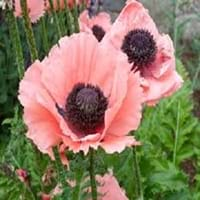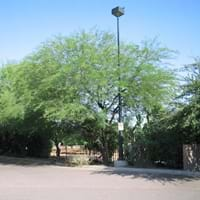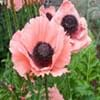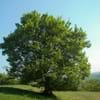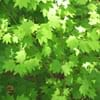Life Span
Perennial
Perennial
Type
Tender Perennial
Shrubs, Trees
Origin
Western Asia
Northeast Mexico, Southeastern United States
Types
Not Available
Not Available
Habitat
Lake margins, Lake Sides, Temperate Regions
Hillside, Slopes
USDA Hardiness Zone
3-9
9-11
AHS Heat Zone
9-1
Not Available
Sunset Zone
A1, A2, A3, 1a, 1b, 2a, 2b, 3a, 3b, 4, 5, 6, 7, 8, 9, 10, 11, 14, 15, 16, 17, 18, 19, 20, 21
Not available
Habit
Upright/Erect
Arching/Fountain-shaped
Flower Color
Light Pink
White
Flower Color Modifier
Bicolor
Bicolor
Fruit Color
Not Available
Brown
Leaf Color in Spring
Green, Gray Green, Dark Green
Dark Green
Leaf Color in Summer
Not Available
Light Green
Leaf Color in Fall
Green, Gray Green, Dark Green
Dark Green
Leaf Color in Winter
Not Available
Light Green
Leaf Shape
Aristate
Elliptic
Plant Season
Spring, Summer
Spring
Sunlight
Full Sun, Partial Sun
Full Sun
Growth Rate
Medium
Medium
Type of Soil
Loam
Dry, Loam, Sandy
The pH of Soil
Acidic, Neutral, Alkaline
Slightly Alkaline
Soil Drainage
Well drained
Dry
Bloom Time
Late Spring, Early Summer
Early Spring, Late Spring, Mid Spring
Tolerances
Not Available
Drought
Where to Plant?
Container, Ground, Pot
Ground
How to Plant?
root cutting
Seedlings
Plant Maintenance
Medium
Low
Watering Requirements
Keep the Soil well drained
Do not water excessively
In Summer
Lots of watering
Adequately
In Spring
Moderate
Average Water
In Winter
Average Water
Average Water
Soil pH
Acidic, Neutral, Alkaline
Slightly Alkaline
Soil Type
Loam
Dry, Loamy, Sandy
Soil Drainage Capacity
Well drained
Dry
Sun Exposure
Full Sun, Partial Sun
Full Sun
Pruning
Cut away fading foliage, Prune after flowering, Remove damaged leaves, Remove dead branches, Remove dead leaves
No pruning needed
Fertilizers
10-52-17 after germination, All-Purpose Liquid Fertilizer
Not Available
Pests and Diseases
Pests and diseases free, Red blotch
Healthy tree
Plant Tolerance
Deer resistant, Drought
Drought
Flower Petal Number
Single
Single
Foliage Texture
Medium
Fine
Foliage Sheen
Matte
Matte
Attracts
Not Available
Birds, Flies
Allergy
Skin irritation
Not Available
Aesthetic Uses
along a porch, deck or patio, Beautification, Borders, Cottage Garden, Mixed Border, small hedge
Not Used For Aesthetic Purpose
Beauty Benefits
Not Available
Not Available
Edible Uses
Not Available
No
Environmental Uses
Air purification, Deer resistant
Erosion control
Medicinal Uses
Not Available
Fever, Kidney problems, Not Available, Urinary tract problems
Part of Plant Used
Flowers, Whole plant
Flowers
Other Uses
Beneficial species for attracting pollinators, Showy Purposes
Food for animals, Food for insects
Used As Indoor Plant
No
No
Used As Outdoor Plant
Yes
Yes
Garden Design
Feature Plant, Mixed Border
Rock Garden / Wall
Botanical Name
PAPAVER orientale 'Carneum'
Senegalia berlandieri
Common Name
Oriental Poppy, Pink Oriental Poppy
Acacia
In Hindi
ओरिएंटल पोस्ता
Acacia
In German
Türkischer Mohn
Acacia
In French
pavot oriental
Acacia
In Spanish
amapola oriental
Acacia
In Greek
oriental poppy
Acacia
In Portuguese
papoila oriental
Acacia
In Polish
orientalne maku
Acacia
In Latin
oriental poppy
Acacia
Phylum
Angiosperms
Magnoliophyta
Class
Magnoliopsida
Magnoliopsida
Order
Ranunculales
Fabales
Family
Papaveraceae
Fabaceae
Clade
Eudicots
Not Available
Tribe
Not Available
Acacieae
Subfamily
Magnolioideae
Mimosoideae
Number of Species
Not Available
Difference Between Pink Oriental Poppy and Acacia
If you are confused whether Pink Oriental Poppy or Acacia are same, here are some features about those plants to help you choose better. Many people think that these two plants have the same characteristics, but one can see Pink Oriental Poppy and Acacia Information and learn more about it. Fertilizers required for proper growth of Pink Oriental Poppy are 10-52-17 after germination and All-Purpose Liquid Fertilizer, whereas for Acacia fertilizers required are Not Available. Hence, one should know the basic difference between Pink Oriental Poppy and Acacia if you are planning to have them in your garden to enhance its beauty.
<
Flowering PlantsImportance of Pink Oriental Poppy and Acacia
Want to have the most appropriate plant for your garden? You might want to know the importance of Pink Oriental Poppy and Acacia. Basically, these two plants vary in many aspects. Compare Pink Oriental Poppy and Acacia as they differ in many characteristics such as their life, care, benefits, facts, etc. Every gardener must at least have the slightest clue about the plants he wants to plant in his garden. Compare their benefits, which differ in many ways like facts and uses. The medicinal use of Pink Oriental Poppy is Not Available whereas of Acacia is Fever, Kidney problems, Not Available and Urinary tract problems. Pink Oriental Poppy has beauty benefits as follows: Not Available while Acacia has beauty benefits as follows: Not Available.
Compare Facts of Pink Oriental Poppy vs Acacia
How to choose the best garden plant for your garden depending upon its facts? Here garden plant comparison will help you to solve this query. Compare the facts of Pink Oriental Poppy vs Acacia and know which one to choose. As garden plants have benefits and other uses, allergy is also a major drawback of plants for some people. Allergic reactions of Pink Oriental Poppy are Skin irritation whereas of Acacia have Not Available respectively. Having a fruit bearing plant in your garden can be a plus point of your garden. Pink Oriental Poppy has no showy fruits and Acacia has no showy fruits. Also Pink Oriental Poppy is not flowering and Acacia is flowering. You can compare Pink Oriental Poppy and Acacia facts and facts of other plants too.
